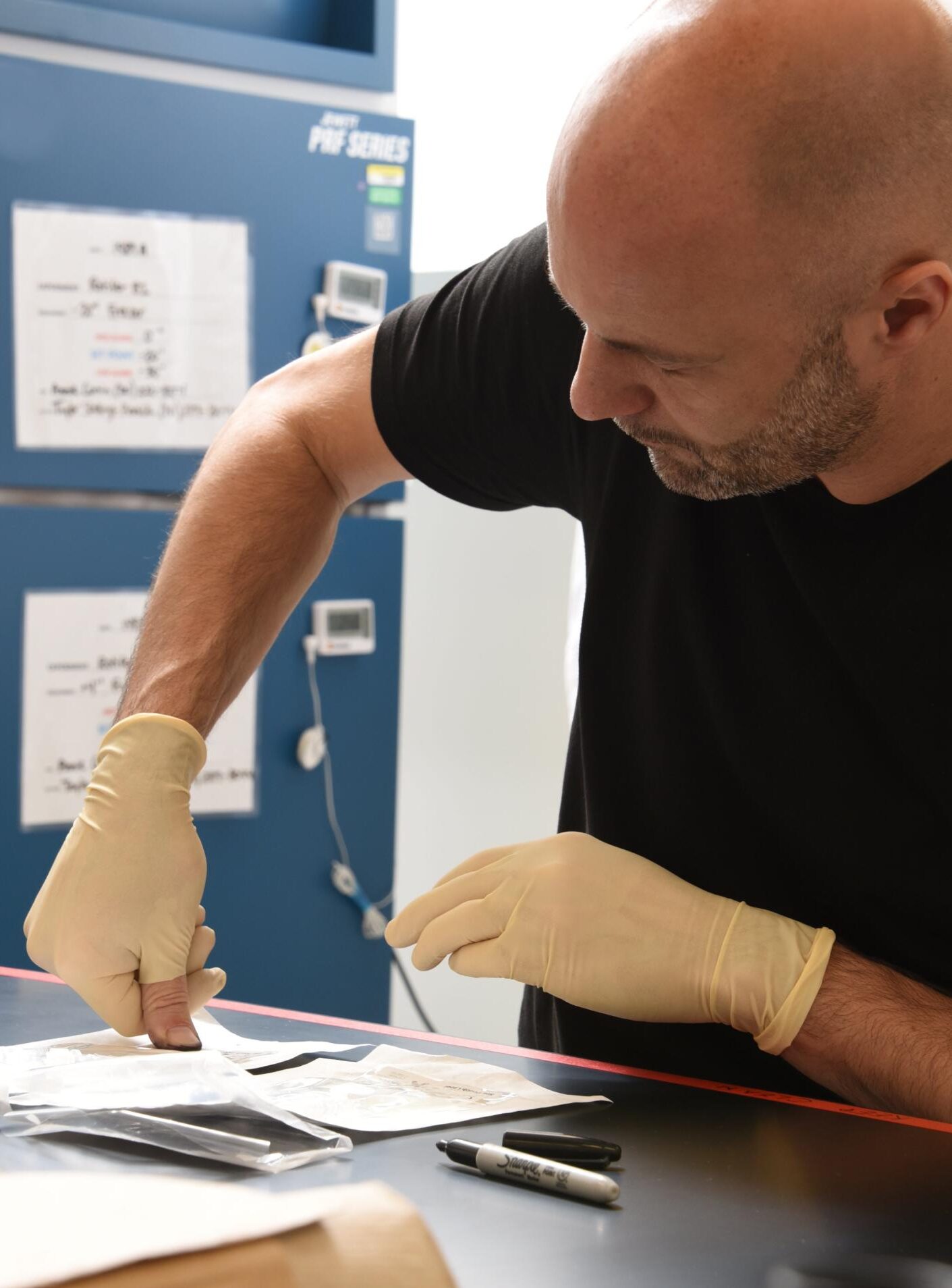TechArt

© SEADS
How does technology inspire artists? In this feature, an artist explains.
Angelo Vermeulen
Ēngines of Ēternity
Text Dorine van Gorp
They were given ten square centimetres for their art project. TPM researcher Angelo Vermeulen and his colleagues from art and science collective SEADS sent glyphs (unique markers) into space along with rotifers. Vermeulen studied biology and photography at the art academy. At the Faculty of Technology, Policy and Management, he helps create extremely sustainable closed ecosystems for the ESA project MELiSSA. “I am fascinated by emergence, growing things. Taking a step back and letting processes organise themselves.” He describes his work as bio-inspired engineering and bottom-up design: “Take for instance a termite mound. There’s not one termite that comes up with the basic plan, it arises through emergence.” He has also experienced these dynamics of guiding rather than controlling in the SEADS collective in which scientists and artists from all over the world create art together.
They participated in the scientific project RISE (Rotifer In SpacE). In order to find out how DNA repair works in space,
RISE transported rotifers to the ISS space station on two occasions. This organism can survive extreme conditions and dry out to a spore whereby its DNA breaks up. When this is repaired, genetic variation can arise. For SEADS, that raised the question as to how humanity will evolve in space. What kind of identity and culture will we develop and who will determine these? That question became the basis for their ‘co-creating’ artwork. On each of the bags containing rotifers was a white space measuring one square centimetre onto which Vermeulen pressed a marker designed by SEADS with his thumb. On their return to Earth, they translated the sequence of markers into a sculpture using a self-constructed algorithm. The measured effects of space on the rotifer genes were then added to an algorithm and a second variant of the sculpture was generated. Humans, biological organisms, algorithms and space thus come together to form a unique artwork. The sculptures were produced using photopolymerisation and 3D-printing technology.
Ze deden mee met het wetenschappelijke project RISE (Rotifer in Space). Om te ontdekken hoe DNA-reparatie werkt in de ruimte, bracht RISE rotiferen naar ruimtestation ISS. Dit organisme kan extreme omstandigheden overleven en uitdrogen tot een spore waarbij zijn DNA uit elkaar valt. Bij de reparatie daarvan kan genetische variatie ontstaan. Dat riep bij SEADS de vraag op hoe de mensheid zal evolueren in de ruimte. Die vraag werd de basis voor hun ‘co-creërend’ kunstwerk. Op elk van de zakjes met raderdiertjes zat een vierkante centimeter witruimte waarop Vermeulen een door SEADS ontworpen marker drukte met zijn duim. Bij terugkomst op aarde vertaalden ze deze sequentie van markers via een zelfgebouwd algoritme naar een sculptuur. Daarna werden de gemeten effecten van de ruimte op de rotiferen-genen toegevoegd aan het algoritme en werd een tweede variant van de sculptuur gegenereerd. Zo vormen mensen, biologische organismen, algoritmes en de ruimte samen een uniek kunstwerk. De sculpturen zijn in 3D geprint in een fotopolymeer.
The work entitled ‘Ēngines of Ēternity’ can be seen in Dresden until March 2023 and then in London.
© Tekening: Arise Wan
